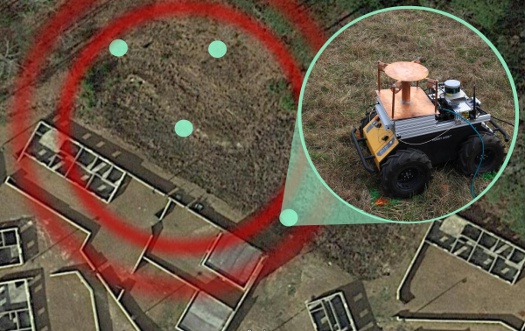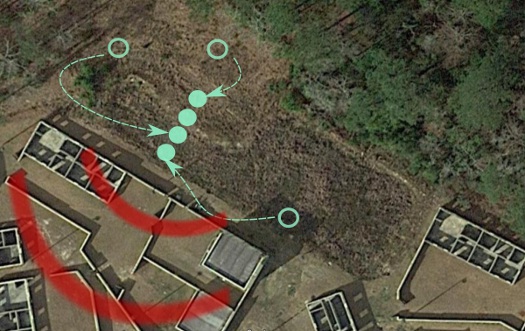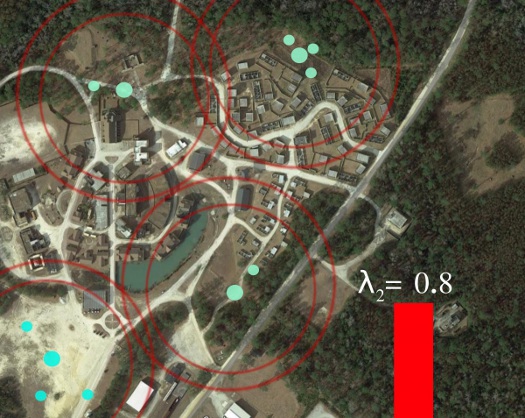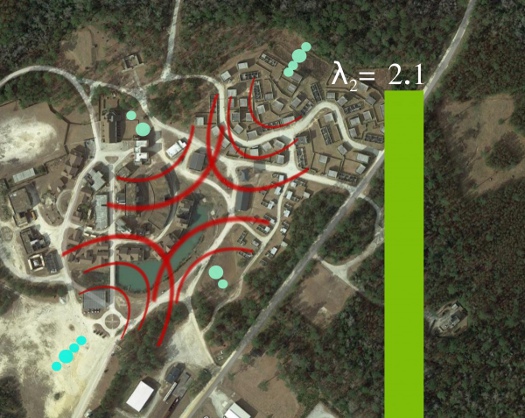 |
| November 10, 2020 | Volume 16 Issue 43 |
Designfax weekly eMagazine
Archives
Partners
Manufacturing Center
Product Spotlight
Modern Applications News
Metalworking Ideas For
Today's Job Shops
Tooling and Production
Strategies for large
metalworking plants
Warfighter communication tech: Researchers automate deployment of robot arrays
Robots can now automatically create antenna arrays to improve network connectivity.

One of several ground robots move into position with compact low-VHF antennas. [Image credit: U.S. Army]
Army and university researchers have collaborated to develop a controller for deploying robots that can form antenna arrays to maintain longer-range wireless communication. Using this technique, antennas are distributed between mobile robots, which allows the controller to guide robots autonomously to create and maintain a reliable wireless communication network in challenging battlefield environments.
Recent progress in antenna design for the lower bands of the very high frequency (VHF) range and corresponding parasitic antenna array research shows it is possible to form multi-robot antenna arrays, said Jeff Twigg, researcher with the U.S. Army Combat Capabilities Development Command's Army Research Laboratory.
In a recent paper, Twigg, Dr. Brian Sadler (CCDC ARL), and Dr. Nikhil Chopra from the University of Maryland, College Park propose a directional model that describes an approach to maximize overall network connectivity. Through simulation, they test their approach and demonstrate its ability to increase communication range by automatically increasing array size.
"We proposed a simple way to model the antenna gain created by forming a particular type of antenna array, which is composed of passive (unpowered) and active (powered) antennas," Twigg said. "We also determined the speed and direction in which these antenna arrays should move so that a network of these antenna arrays will always be connected. Our research also describes how quickly new antenna robots should be added to different antenna arrays and where these antennas should be placed."

Robots move to positions where they can reflect and focus a signal for directional communication. [Image credit: U.S. Army]
The arrays increase communications range by using robots composing the array to position passive antennas that reflect and focus radiation around a robot with an active antenna. They extend communication range in a desired direction in urban and indoor environments.
Existing control formulations are not general enough to support this new capability, Twigg said. "We want to know how to deploy groups of these arrays."
When Soldiers need to communicate over a longer distance, they need to increase the power of their transmitter and/or the gain of their antenna, Twigg said. "This approach allows us to increase the gain without increasing power," he said.

These groups of robots are poorly connected and are not positioned to form arrays. [Image credit: U.S. Army]

Groups of robots form arrays and maneuver to increase overall network connectivity. [Image credit: U.S. Army]
Maintaining connectivity between an ensemble of autonomous or semi-autonomous systems is critical for mission completion, Chopra said. "This paper has developed a new framework for addressing this problem successfully in challenging operational environments."
For the Army, this research is critical to its Modernization Priorities, which will allow it to fight and win in multi-domain operations.
"The Next Generation Combat Vehicle and Network Command, Control, Communications and Intelligence Modernization Priorities require innovative ways of establishing and maintaining communications," Twigg said. "This research describes how autonomous or semi-autonomous vehicles can create and maintain a reliable communications network."
According to Twigg, this research will help guide concepts about how parasitic antenna arrays should be deployed. In the short term, it will help Soldiers know when and where to create parasitic antenna arrays. In the long term, he said, it will guide robots and other autonomous systems to automatically maintain communication.
"Our approach is especially reliable in challenging environments where there are high buildings or dense forest cover," Twigg said. "In these environments, WiFi or cellular coverage is not reliable. This research and future efforts will help develop technologies that enable reliable communication for these environments."
Source: U.S. Army CCDC Army Research Laboratory
Published November 2020
Rate this article
View our terms of use and privacy policy
